How to Train a Shetland Sheepdog: 10 Expert Tips

Updated on
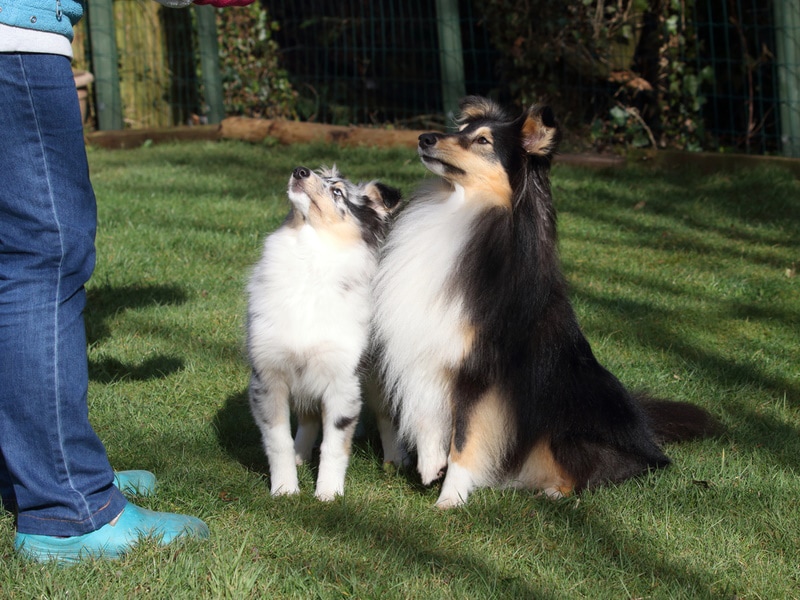
When bringing a new Sheltie into the family, there will clearly be much excitement over your adorable new little furball. But like all pets, owning a dog is a responsibility as well. You have to care for them, feed them, and of course, train them!
Many owners dread the idea of training their new dog, but luckily, the Shetland Sheepdog is a generally intelligent and eager-to-please breed that can be easy to train even for first-time owners.
Don’t know where to start? Here is an easy step-by-step guide on how to train your new Sheltie!
Things to Consider First
Know Your Dog
Before starting, it is important to know your dog. While Shetland Sheepdogs are generally intelligent, eager to please, and easy to train, it is important to understand that each dog has their own unique personality and behavior. For instance, your Sheltie may be a little more stubborn or sensitive compared to other Shelties, and it is up to you to adjust accordingly to find what methods and techniques are most effective for your dog.
Also, it is good to ensure that your dog is healthy and routinely checked up by your veterinarian. During puppyhood is typically when they are most fragile, so be sure to stay on top of their vaccination schedule as directed by your veterinarian.
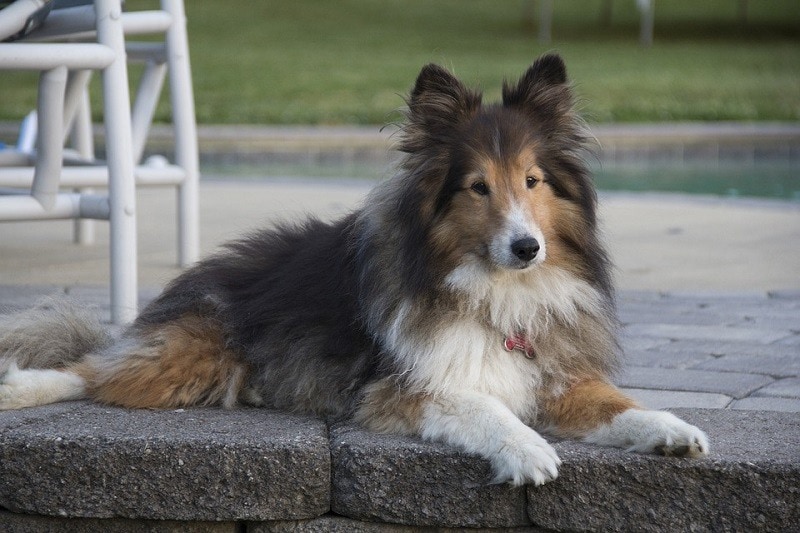
Resources
Training your Sheltie may require resources, such as food, treats, toys, and even a crate. As you progress through your Sheltie’s training, be mindful of the tools you might need to get your dog properly trained!
Consistency
When training puppies at a young age, consistency is key. If you are living in a house with many people, be sure that they are well-oriented and on the same page when it comes to training your new Sheltie.
The 10 Tips on Training Your Shetland Sheepdog
1. Basic Obedience Commands
As early as seven weeks old, you can already begin to teach your dog basic commands—such as “sit”, “stay”, “come here”, and “stop”. Such commands are essential for communication and house-breaking, so early exposure to these commands can increase the chances that your Sheltie will learn them quickly as they grow older.
At this young age, your Sheltie is being exposed to what is normal in their new home. This is also the best time to teach your Sheltie what areas and objects are theirs. Teach your Sheltie where their bed is, where they feed, and also where they should go potty!
It is important to note that Shelties can be quite vocal dogs. They can bark when stressed, curious, and even happy! Teaching “stop” can help control their barking as they grow older.
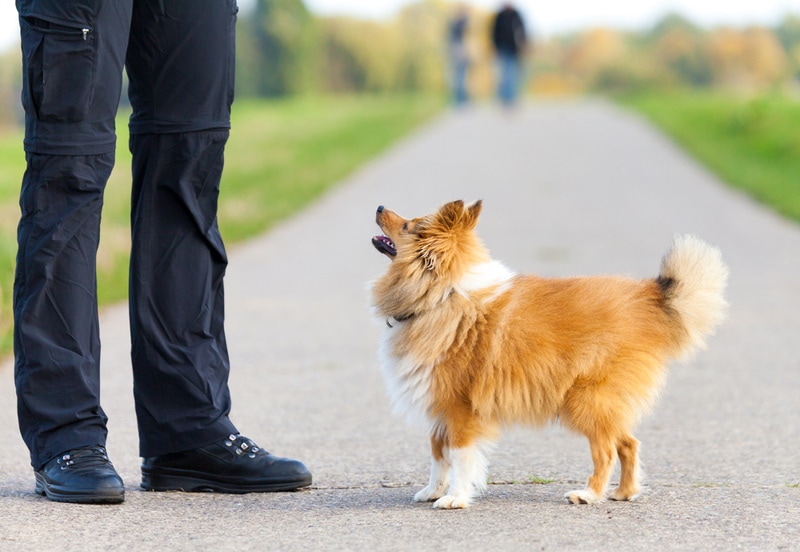
2. Positive Reinforcement
Shelties are eager-to-please dogs that respond best to positive reinforcement. Rewarding good behavior with praise, treats, and playtime can easily encourage them to learn what they are being taught.
Shelties are sensitive breeds, so refrain from punishing your Sheltie during training. When correcting an undesired behavior, be patient and firm without hitting or punishing them; this will prevent them from growing aggressive or resentful of you and other humans!
3. Stick to a Schedule. Be Consistent!
An important aspect in training is consistency. To facilitate proper training and learning, be sure to use the same commands and training techniques every time you train your Sheltie. For example, refrain from giving treats when they did not exhibit the desired behavior or skill. Instead, only give the treats when they exhibit the skill during training to help them create the association that this is the behavior expected of them!
Consistency is also important in potty training. Sticking to a scheduled feeding time can help with the timing of your Sheltie’s potty, making it easier to monitor and bring them outside to do their business.
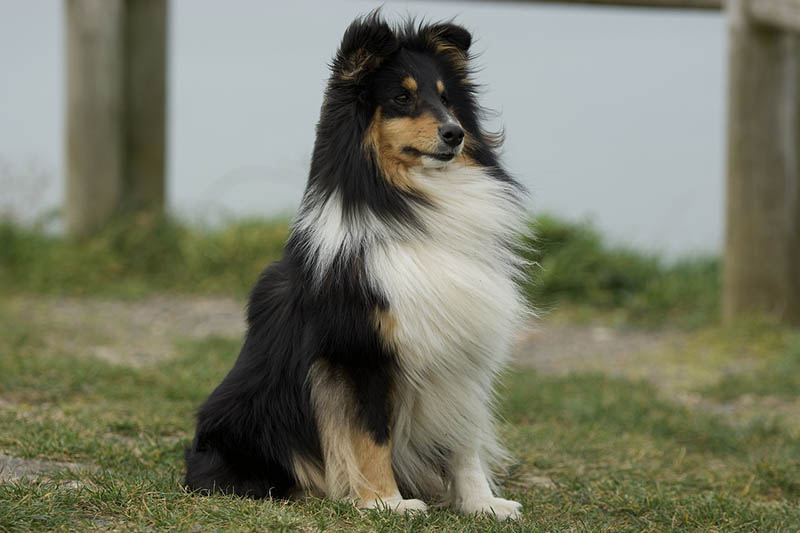
4. Keep Sessions Short
Shelties may be intelligent, but they do have short attention spans and may get bored easily—especially Sheltie pups! To facilitate training, keep training sessions to 10 to 15 minutes at a time and repeat several times a day. This also gives you and your Sheltie a good activity to bond and play with each other, which is good for building a relationship with them!
5. Socialize and Expose Your Sheltie Pup
Like all dogs, socialization and exposure to different people, pets, and environments is a very important aspect in your Sheltie’s training. Shelties can be socialized as early as seven to eight weeks old, so be sure to let them interact with strangers and other pets (always within your supervision).
Shetland Sheepdogs are generally a sociable and friendly breed, so they should be able to easily adjust to the exposure. Proper socialization and exposure during puppyhood will help reduce anxiety and stress as they grow older!
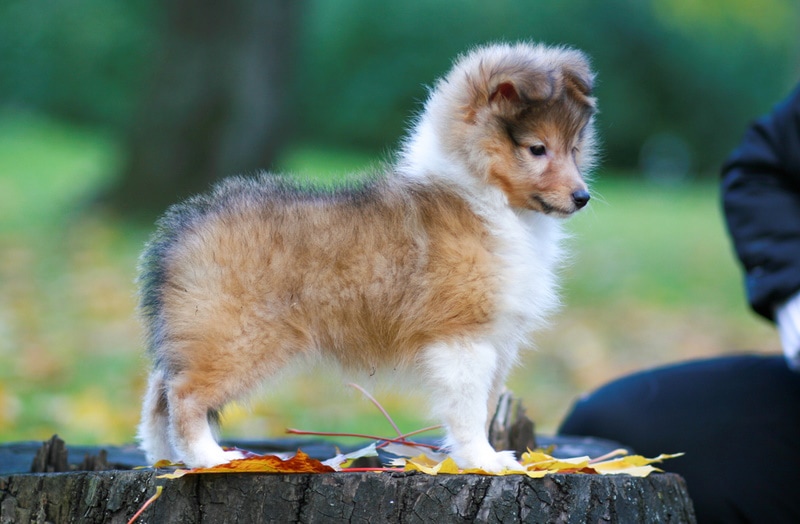
6. Crate Training
Crate training can greatly help your Sheltie grow up to be a proper house-trained dog because of the sense of security they receive in the crate. It also helps them relax and cope when they are feeling stressed, reducing the chances of aggressive or destructive behavior.
Crate training can begin as early as eight weeks old and is great for teaching your dog how to cope with being alone. Shelties are a sensitive breed that can easily get lonely, and crate training helps by giving them their own safe space to rest.
7. Leash Training
Another thing to note about Shelties—they are full of energy! They require daily stimulation, which they can acquire through walks. As such, leash training is essential for teaching your Sheltie how to walk calmly on a leash without pulling.
Leash training can begin as early as 10 weeks old, so remember to be gentle and provide many rewards and praises for your sheltie!
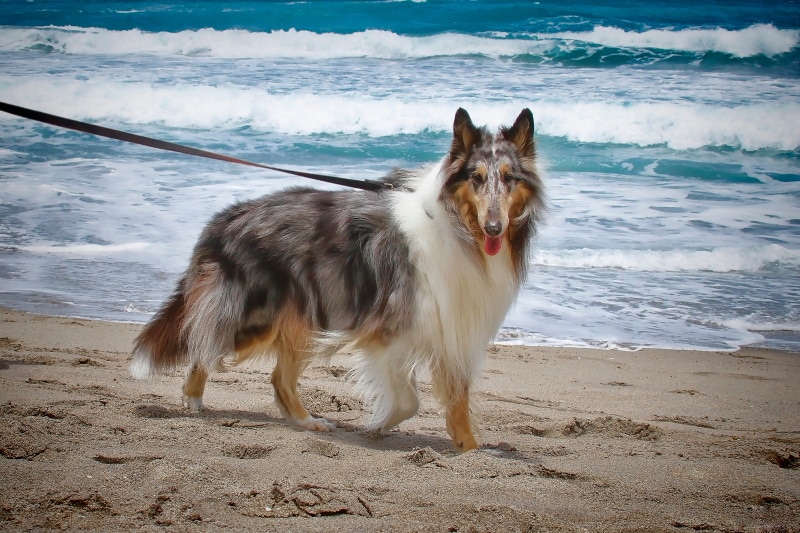
8. Learn Recall
Teaching recall is a skill taught and learned later, compared to other basic commands. Training for recall typically starts around four months old, and involves teaching your Sheltie to come to you when called while outdoors and off leash.
When teaching recall, start at short distances, then gradually increase distances and distractions. Don’t forget to give your Sheltie yummy treats as a reward!
9. Clicker Training
To add to your verbal praises and treats, you can also use clickers for training your Sheltie. Clicker training is a positive reinforcement technique that uses a click sound as a secondary reinforcer to mark a good behavior. This is typically used for more advanced training to eventually teach your Sheltie more complex commands later, as they grow older. With a clicker, Shelties can learn and understand which behaviors earn a reward much faster.

10. Enroll in an Obedience Class
To supplement your home training, you can also enroll your Sheltie into an obedience class. This reinforces basic training and helps your Sheltie learn more advanced skills with professionals. Your Sheltie will typically be with other dogs in class, which is also a great opportunity for socialization.
Puppies can be enrolled into obedience class as early as seven to eight weeks. If available, you might want to enroll them as early as possible!
Final Thoughts
Shetland Sheepdogs are intelligent and eager-to-please dogs that are generally easy to train, making them a good choice for first time dog owners. Although sociable, intelligent, and easy to train, early socialization and training is still key to having a well-behaved and socialized Sheltie as a family pet!
Featured Image Credit: James Hime, Shutterstock













